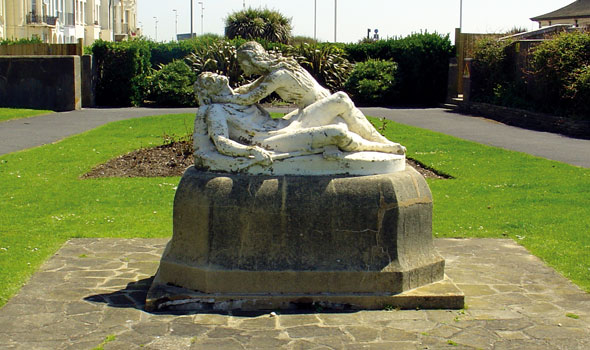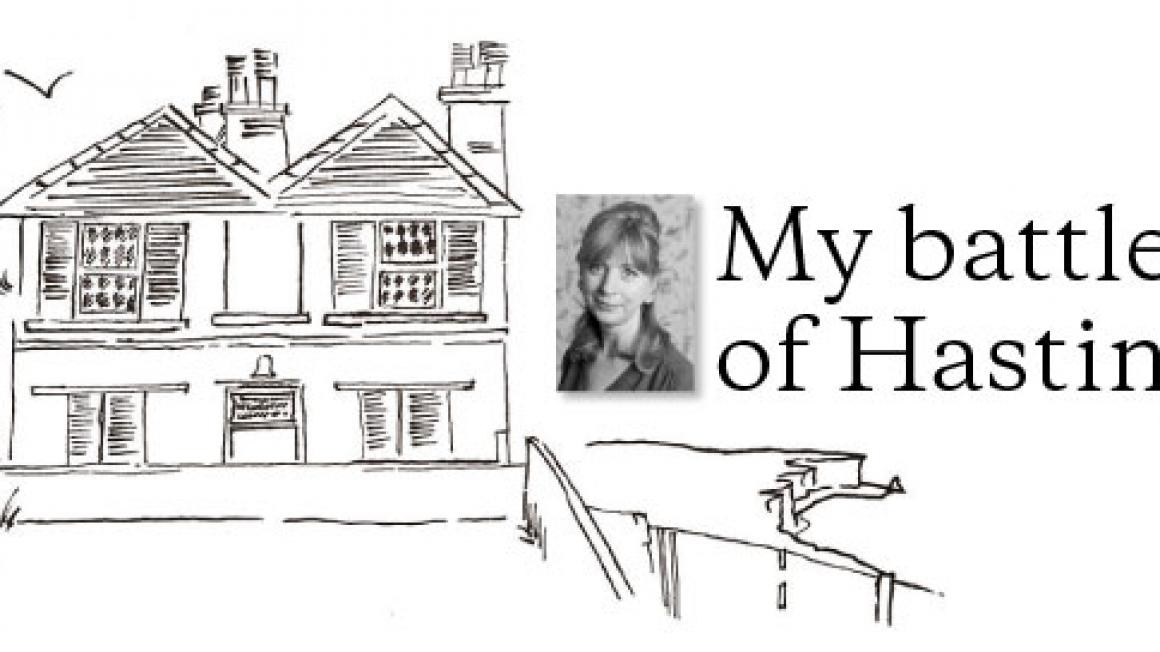Statue-Saving
In reality, he looked a lot worse than he does here. According to King Harold historians, his body was very badly mutilated by the Normans (the shot through the eye was followed by an avalanche of arrows) and the triumphant army initially refused to surrender his body to his mother, even for a king’s ransom in gold.
 Romantic story: Harold and Edith
Romantic story: Harold and EdithAccording to folklore, it was Edith who walked through the carnage-strewn battlefi eld and found his remains; identifying it by marks known only to her. He was then carried off and given a Christian burial by the monks at Waltham Abbey.
It is a romantic story, one made all the more so by the added belief that Edith climbed the Watch Oak tree (now the name of a roundabout on Battle High Street) to watch the battle and heard him fall. Clearly, there is a high degree of poetic licence involved in this but there is nothing wrong with poetry – especially as a back story to a piece of sculpture.

The statue is now part of calls on Hastings council to clean up their act – or at least their statues. Another is the semi-derelict, Grade II*, group statue of Queen Anne, carved under the direction of Sir Christopher Wren, which stands in the grounds of Holmhurst St Mary on The Ridge praying for a patron.
Sadly, statue-saving doesn’t appear to be top of the council’s budgetary concerns so they may be relieved to hear that local historian Peter Burke may be about to hand them a get-out clause. According to Peter, Harold did not die a hero’s death in Battle. There was no shot through the eye and no weeping widow. Rather, he survived, walked off and lived out a long life in a sort of hermit retirement village in Kent. In which case, can I have the statue for my garden, please?
Next week: Cultural tourists



